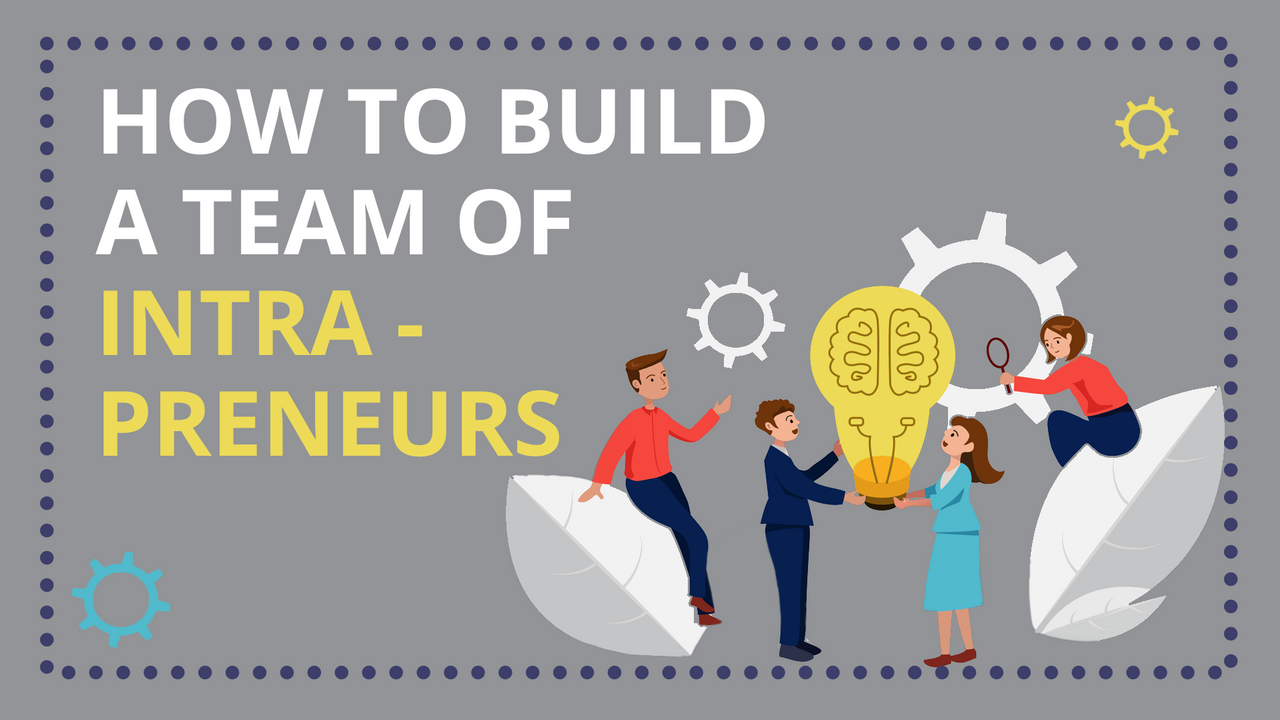How to Build a Team of Intrapreneurs
Jun 15, 2022
Have you ever found yourself asking, "What would I do if this were my business?" You might be an intrapreneur, and that's a good thing. Organizations benefit when employees think like business owners, rather than with an employee mindset. Thinking and acting like an owner is an important catalyst for engagement and innovation.
According to a recent Gallup survey, only 15% of employees are engaged at work globally.[1] More than just a well-being aspect of a workplace, employee engagement directly translates to greater productivity, innovation and profit. Did you know that engaged employees generate between 18-43% more revenue than disengaged employees?[2]
Building employee engagement is a common focus within organizations, but how can you do it successfully? A powerful approach is to foster a culture where employees view their work as if they were a business owner or entrepreneur. Creating a culture where initiative and ideas are fueled through the mindset of an entrepreneur, and everyone feels a sense of ownership for their work is called intrapreneurship.
What is an intrapreneur?
Like the name implies, intrapreneurs are like entrepreneurs, except that they are internal within your organization. Intrapreneurs feel autonomy within their role, and see their work through the lens of a business owner. They feel a sense of ownership for the outcome of their work and have a stake in business development. But they also get the advantages of working for an organization, with access to a team, more resources, the ability to consult with experienced mentors, and the opportunity to earn a steady income. For many people, being an intrapreneur represents the best of both worlds: it combines autonomy and responsibility with a team and resources, and it carries less individual risk. As it turns out, harnessing the attitude and structure of an entrepreneurial approach is really engaging.
Build a team of intrapreneurs.
Facilitating a mindset shift that moves your team from seeing themselves as merely tasked to do a job to feeling like a business owner is not as hard as it sounds. Start with these three small steps and you'll begin to see employees behaving less like hired hands and more like intrapreneurs.
1. Give them ownership.
The main thing that distinguishes an entrepreneur from an employee is ownership. They don't have to literally be an owner to feel like they have a stake in the organization’s success. It can be as simple as giving someone responsibility for an initiative or project—even if they don't have the words "leader" or "manager" in their title. Give them clear parameters and set expectations about what needs to be achieved, and let them know that they are in charge of all aspects of the initiative. Being given this type of responsibility fuels confidence, which leads to increased engagement.
2. Use the coach approach.
Once you've assigned responsibility and it’s been accepted, apply the coach approach to help your team of intrapreneurs along. The coach approach relies on active listening and questions to get the coachee to arrive at their own solution. It empowers those on your team to think more like a business owner who has autonomy over their work. It helps intrapreneurs build their problem-solving muscles.
Schedule regular check-ins to ensure that people get the support they need. During your check-in sessions, ask questions, and then listen. Resist the urge to solve problems for them or tell them what to do. Instead, guide them to arrive at the solution on their own.
3. Hold them accountable.
Part of the thrill of entrepreneurship is feeling responsibility and autonomy. That feeling can be harnessed within organizations when employees feel they are ultimately responsible for their area of work. But just as a business owner must eventually face the results of their decisions, so too must an intrapreneur. Taking responsibility for our choices is how we learn.
It might sound counterintuitive, but accountability boosts engagement. In fact, employees who feel that their manager holds them accountable are 2.5 times more likely to be engaged in their job.[3] At its most effective, accountability is taken seriously, and it helps employees take responsibility for their work.
Intrapreneurship begins with I.
Building your team of intrapreneurs involves giving them the freedom and authority to take charge. It begins with trusting them with responsibilities, is boosted when you support them through coaching, and comes full circle when you expect their accountability. When everybody acts like a business owner, everybody is more invested in helping the business succeed.
About the Author
Sandra McDowell, MA, PCC, CPHR, SHRM-SCP
As the founder and voice behind eLeadership Academy™, Sandra McDowell helps leaders and organizations increase performance and well-being by leveraging insights from cognitive science to harness the untapped power of the brain.
Sources:
[1] https://www.gallup.com/workplace/231644/leaders-win-seat-table.aspx
[2] Hay Group, ‘Engage Employees and Boost Performance’, 2001, cited in MacLeod, D., and Clarke, N. Engaging for Success: Enhancing Performance Through Employee Engagement—A Report to Government. London: Department for Business Innovation and Skills. Crown copyright, July 2009, p. 39
[3] https://www.gallup.com/workplace/231659/performance-measures-motivate-madden-employees.aspx


